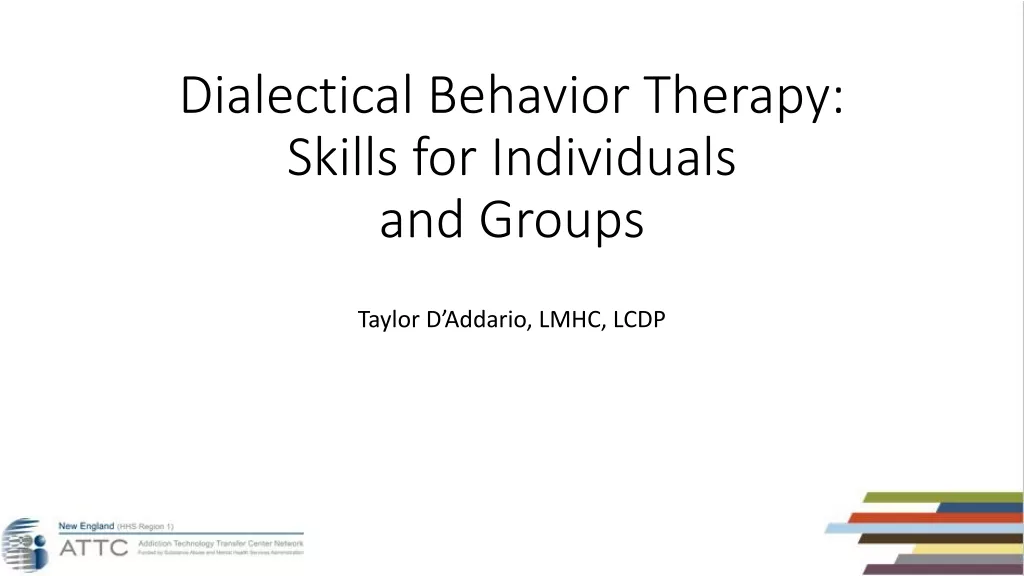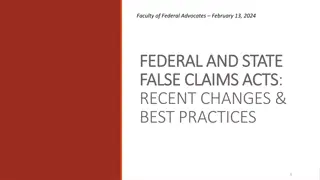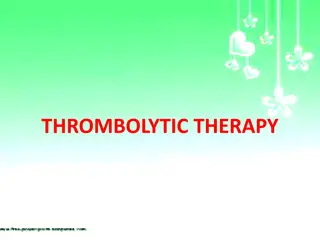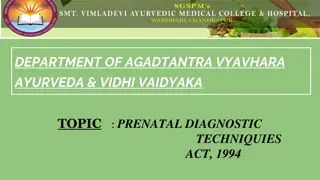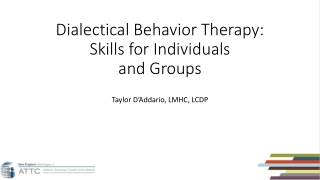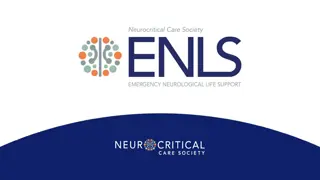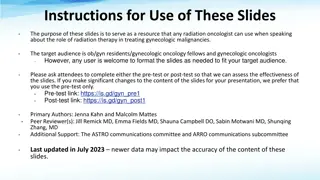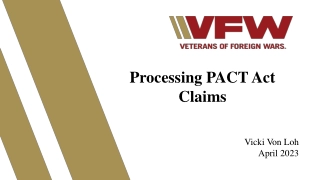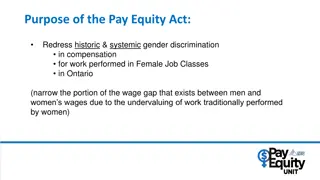Understanding Acceptance and Commitment Therapy (ACT)
Acceptance and Commitment Therapy (ACT) is a therapeutic approach that focuses on psychological flexibility, emphasizing acceptance of thoughts and feelings, commitment to values, and behavioral changes. It aims to help individuals develop skills to navigate life's challenges effectively, promoting mindfulness and acceptance of experiences while taking committed action towards personal values.
Download Presentation
Please find below an Image/Link to download the presentation.
The content on the website is provided AS IS for your information and personal use only. It may not be sold, licensed, or shared on other websites without obtaining consent from the author. Download presentation by click this link. If you encounter any issues during the download, it is possible that the publisher has removed the file from their server.
Presentation Transcript
ACCEPTANCE AND COMMITMENT THERAPY (ACT) Cecilia Poon, PhD, ABPP Licensed Psychologist
Disclosure and Disclaimer I have no financial or other conflicts to declare Case example(s), if any, are hypothetical
Objectives Understand the basic features of ACT Describe the evidence base of ACT Discuss the application of ACT with older adults (Cultivate an interest in ongoing professional development in ACT and related approaches)
ACT in Context CBT (Cognitive Behavioral Therapies) Behavioral Activation Cognitive Therapy Rational Emotive Behavior Therapy (REBT) Exposure and Response Prevention (ERP) Cognitive Processing Therapy (CPT) Prolonged Exposure (PE) Integrated Behavioral Couples Therapy Acceptance and Commitment Therapy (ACT) Dialectical Behavior Therapy (DBT) Functional Analytic Psychotherapy (FAP) Mindfulness-Based Cognitive Therapy (MBCT) Mindfulness-Based Stress Reduction (MBSR) and more etc.
Functional Contextualism Any action or event cannot be separated from its historical and current context Workability Relational Frame Theory Role of human language and cognition in suffering
Hexaflex: 6 Core Processes Adapted from Hayes et al., 1999
Psychological Inflexibility DOMINANCE OF PAST AND FUTURE LACK OF CLARITY OR CONTACT WITH VALUES EXPERIENTIAL AVOIDANCE STUCK/ INFLEXIBLE INACTION, IMPULSIVITY, OR AVOIDANCE FUSION WITH THOUGHTS ATTACHMENT TO CONCEPTUALIZED SELF
3 Pillars of Flexibility in FACT* AWARE OPEN ENGAGED *Focused Acceptance and Commitment Therapy (Strosahl et al., 2012 )
ACCEPTANCE Experiential Avoidance I am afraid/ ashamed of my feelings If I don t do this or do less of this, I won t feel bad Willingness to fully connect with our inner experiences Let go of the tendency to control uncomfortable thoughts, feelings, and sensations Non-judgmental
DEFUSION Cognitive Fusion I think that, so it must be true! Getting hooked and "caught up" in thoughts Confusing thought and reality Look at thoughts, not from thoughts See thoughts as what they are (i.e., thoughts!) Not try to change the content, or eliminate/ distract from our thoughts Reduce the influence of unhelpful cognitive processes on behavior; notice the language processes
PRESENT MOMENT Dominance of Conceptualized Past and Feared Future Ruminate about the past Worry about the future Notice accurately what is happening in the here and now Engage fully in what we are doing Take in important information about whether to change or persist in a behavior Mindfulness
SELF AS CONTEXT Self as Content I am my narrative and my story can t change Rigid rule-following A transcendent sense of self, i.e., the observing self Self as context from where thoughts, feelings, and sensations unfold Loosen up attachment to language of conceptualized self Sky and weather metaphor
VALUES Lack of Clarity or Contact with Values Feels un-anchored or direction-less Feels stuck Existing not based on what matters The person we want to be, things we want to do, what we want to stand for in this life A direction that guides ongoing action; not a goal A sense of meaning, abundance, vitality
COMMITTED ACTION Inaction, Impulsivity, or Persistent Avoidance Ineffective pattern of behavior, doing the same thing over and over expecting different (better) results Going through the motions while feeling struck/ trapped Take action and make decisions that are in line with our values, even when life is challenging
ACT: What It Is, What It Isnt Experiential > Didactic Use of experiential exercise and metaphors Not a specific set of coping skills, techniques, or protocols May work on one or more core process, in any order Number of sessions: 1- 20+ Therapeutic relationship, case conceptualization (e.g., life and problem context, goals, treatment plan), and practice ARE important It is not passive
ACT: Overall Evidence Base 1,000+ RCTs on ACT and its components as of December 2022 (www.contextualscience.org) Small sample size, don t always have a strong comparison group Its focus makes it difficult to compare outcome with diagnosis-specific approaches APA Division 12 cited strong research support for using ACT to treat chronic pain; modest support for anxiety, depression, and OCD; pending support for psychosis The VA listed ACT for depression as an EBT SAMHSA recognized ACT as an EST
ACT with Older Adults Has ~20 studies involving adults age 60 and older, in community and LTC settings across cultural-linguistic backgrounds Effective in reducing distress (depression) in older adults Less conclusive for enhancing physical functioning and psychological flexibility Demonstrates acceptability and feasibility among older adults with chronic pain, depression, generalized anxiety, caregiving stress...etc. Newer research focuses on alternative delivery methods, e.g., online modules to reduce loneliness
ACT with Older Adults: Why? Transdiagnostic Consistent with Baltes and Baltes Selective Optimization and Compensation (SOC) Model of Successful Aging (e.g., Acceptance, Present Moment; Workability of Committed Action) May address ageism in older adults and those around them (e.g., Defusion, Self-As-Context) Consistent with What Matters Most in the Geriatrics 5Ms (e.g., Values) Supports older adults wisdom, resilience, and emotion regulation
Case Examples (If there is time)
Questions? Email cepoon@nebraskamed.com for references and resources THANK YOU!






